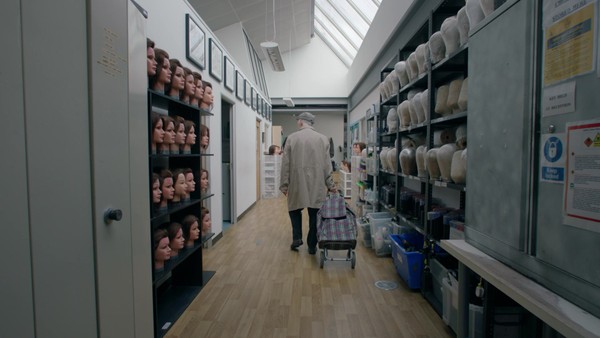Pharma > Disease Awareness & Understanding
UNBLUSH
IMRE, Baltimore / AMAG PHARMACEUTICALS / 2020


Overview
Credits
OVERVIEW
Why is this work relevant for Integrated?
unblush is a condition awareness campaign designed to increase the number of US premenopausal women seeking treatment for Hypoactive Sexual Desire Disorder (HSDD), or low sexual desire that women find frustrating. The campaign tackles a complex, politically and emotionally charged therapeutic area by confronting deep-seated taboos about women’s sexuality. Powered by women’s shared emotional experiences, unblush inspires them to transform their embarrassment to empowerment. The campaign is deftly orchestrated across a swath of digital platforms to support women’s needs, including video, social content, influencers, sponsored content, a live video, an email program and an owned digital community.
Background
HSDD is the most common form of female sexual dysfunction. Believed to be caused by an imbalance of certain brain chemicals. A recognized medical condition since 1987, it affects approximately 10% of premenopausal women. Even so, most women haven’t heard of it.
That’s largely the result of broken dialogue between women and their doctors. In a survey of women reporting dissatisfaction with their level of sexual desire, 73% of premenopausal responders had never mentioned their low sexual desire to their doctor. The two most common reasons: discomfort or embarrassment and unawareness of HSDD as a medical condition.
Although HSDD can take a significant emotional and psychological toll on women, many doctors don’t take female sexual desire seriously. The few women who do ask about low sexual desire feel dismissed. To increase the number of women seeking treatment, we needed to lift awareness and empower women to begin the conversation.
Describe the creative idea
unblush means to transform embarrassment to empowerment; stress to strength. It’s a call to action for millions of women who are frustrated with their low sexual desire. It encourages and inspires women to break through the stigma surrounding this issue and speak up: to their partners, healthcare providers and one another.
unblush helps lift the voices of women who had previously suffered in silence. Who knew something was wrong, but didn’t know what. Who blamed themselves. Who were told they were imagining it. Or that it was just part of getting older. unblush lets women know that what they’re feeling is real, it has a name, and they’re far from the only one dealing with it. Ultimately, unblush provides the knowledge that HSDD is treatable, plus tools for getting help and a supportive community of women who’ve been there—so that they can all move towards regaining their sexual desire.
Describe the strategy
Our business goal was to increase the number of women aged 18-49 seeking treatment for their low sexual desire. The female sexual health category is complex, so we employed a three-pronged strategy: intercept women with condition education when they’re searching for lifestyle solutions for low sexual desire; break the taboo that keeps them from self-identifying; and give them multiple pathways to treatment and tools to advocate for themselves.
Aspects of sexuality—particularly female sexuality—can still rouse controversy and be influenced by power relations between men and women. During our launch period, the #MeToo movement sparked conversation informed by a sense of sisterhood. We tapped into the feelings of optimism, support and reclamation to form a community of our own. Female energy and empathy are the engine for our campaign, which reaches out to all women who want to want sex again.
Describe the execution
In partnership with Condè Nast, unblush hosted an event centered around sensual experiences and frank conversations. Featured guests included sex positive comedians Phoebe Robinson and Ilana Glazer, and dynamic change leader Sonya Renee Taylor. We introduced women to the unblush manifesto and invited them to explore the meaning of unblushing via a personal interview booth.
Then, we rode the momentum. unblush flooded the web with educational social content: articles by popular lifestyle publications, docu-style videos of women coming to terms with HSDD and sex positive content created with popular influencers.
These resources drove traffic to unblush.com, our epicenter for empathetic storytelling. A place where women can anonymously ask questions, read articles by experts, take a GIF-powered symptom checker, build an ad lib-style conversation starter for conversations with healthcare professionals and take immediate action by clicking out to our telemedicine partner.
List the results
unblush has had a demonstrable impact on the conversation about low sexual desire. We got the message out with 242MM impressions across Facebook and Instagram alone. Our message disrupted endless scrolling, driving 19-point ad recall rate on Facebook, over 2x higher than the US industry benchmark.
Women have been intrigued by our content and eager to learn more. unblush.com has become the go-to resource for low sexual desire, with over 1.29 million visits and a 49.9% bounce rate (18% better than the industry average). Our consumer-focused resources have kept women engaged with an uncomfortable topic, and over 153K women have gotten answers via our symptom checker diagnostic tool.
unblush has proved to be a powerful call-to-action, with 43K women taking action by clicking out to Vyleesi.com to receive information about treatment options. And most important, unblush has become an agent for change in women’s sexual health.
Describe any restrictions or regulations regarding Healthcare/RX/Pharma communications in your country/region including:
All promotional materials follow a strict Medical, Legal, and Regulatory review process internally to ensure that they are compliant with the FDA’s (Food and Drug Administration) published guidelines and regulations. Additionally, once promotional materials are live, the FDA’s Office of Prescription Drug Promotion (OPDP) continuously monitors ads for best practices.
Describe the target audience and why your work is relevant to them.
U.S. premenopausal women (ages 18-49) who are experiencing the symptoms of Hypoactive Sexual Desire Disorder (HSDD), which is characterized by ongoing low sexual desire that women find frustrating. They don’t know that these symptoms could stem from a medical condition, and need help and information.
More Entries from Regulated in Pharma
24 items













